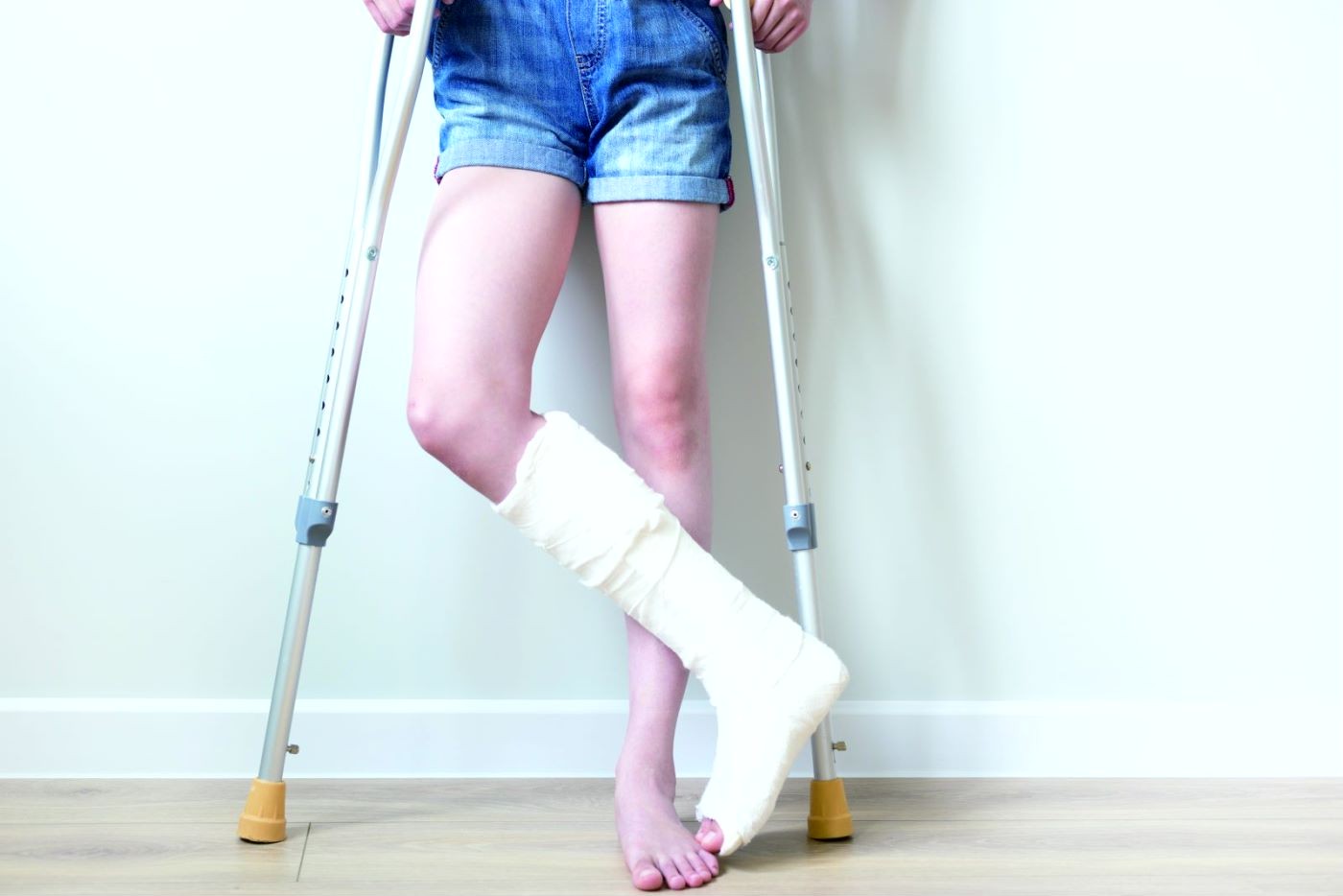
Childhood is full of slips, bumps, and falls. An injury may make for a good story as you get older, but in the moment the tears are real. Here we take a look at the common types of bone fractures children get, distinguish between a sprain and a broken bone, and learn how to reduce the risk of fractures.
Most childhood fractures result from mild to moderate trauma that happens while at play or during sports. The arms are the most common location for fractures.

Broken collarbone or shoulder. A collarbone fracture is common after a collision or fall onto the shoulder. This can happen in sports or when a child falls from playground equipment or out of bed.
Broken wrist. The bones in the wrist are the most commonly broken bones in the arm. The most common type of fracture involves the larger bone in the forearm (radius). It often occurs when a child falls on an outstretched hand that is extended backwards or among those who play contact sports, biking and skiing.
Broken thighbone. The thighbone is the longest, largest, heaviest and strongest bone in the body therefore a fracture in the thighbone only occurs when it comes under significant force. Nevertheless, a fractured thighbone in children is not uncommon.
Broken knee. Knee fractures can involve the kneecap, the shinbone or the thighbone where they join with the knee. It is commonly caused by falling on the knee or car accidents.
Broken ankle. Ankle fractures in children usually involve the tibia and fibula, the two long bones that make up the ankle joint. Many ankle fractures occur when a child’s leg is planted in place and suddenly twisted, such as when playing football, hockey, and basketball. It can also be caused by falls from trampolines or swings.
If you think your child may need treatment for a bone fracture, speak to an orthopaedic specialist.

How do I differentiate a simple sprain from a broken bone?
In both a sprain and a broken bone, there is pain, swelling and difficulty moving the injured area in a normal manner. With a broken bone, it may be accompanied by other symptoms.
Symptoms of a child fracture or broken bone:
• Deformity (unusual shape) of the bone
• Difficulty placing weight on the area
• Persistent bruising, warmth or redness
Fractures occur when the bone is subjected to more force than it can absorb. Bones are weakest when they are twisted. Overuse injuries, falls, trauma or a direct hit to the body can all cause bones to break.
Fractures are commonly associated with the following factors:
• Sport accidents
• Falls from heights
• Accidents
• Poor nutrition
• Low calcium diet
• Obesity
There are some steps you can take to reduce your kids’ risk of getting a broken bone:
• Ensure that they put on the right protective equipment when they are taking part in any games or outdoor activities.
• Calcium and vitamin D are the building blocks for healthy bones. Having a healthy diet will ensure that they get these minerals in sufficient amounts.
• Limit carbonated beverages and soda for healthy bones.
• Encourage your kids to be active and to take part in a variety of sports. Playing a single sport all year round puts repeated stress on the same bones and joints and therefore increases the risk of overuse injuries.
With these tips, take care so you don’t get stuck with an itchy cast.

Dr. David Jiang
Orthopedic Surgeon of Parkway
Address: 1172 Jile Road
Tel: 400 819 6622